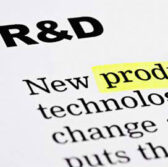 Representatives from Microsoft and Johns Hopkins University met with members of the disruptive technology laboratory at Naval Surface Warfare Center’s Carderock division in Maryland to tackle augmented reality technology platforms and its potential naval applications, the Navy reported Tuesday.
Representatives from Microsoft and Johns Hopkins University met with members of the disruptive technology laboratory at Naval Surface Warfare Center’s Carderock division in Maryland to tackle augmented reality technology platforms and its potential naval applications, the Navy reported Tuesday.
DTL Director Garry Shields said the lab seeks to partner with the Defense Advanced Research Projects Agency, Energy Department and other agencies to collaborate on a project to find new uses for the Microsoft-built HoloLens augmented reality computer in support of the Navy and Marine Corps.
DTL members also teamed up with engineers at JHU’s Applied Physics Laboratory to develop a digital interface in HoloLens that works to control a vehicle through the use of the Optionally Manned Technology Demonstrator Big Area Additive Manufacturing Test Article, a 30-foot-long hull print based on the Mark 8 Mod 1 SEAL delivery vehicle.
DTL members collaborated with military branches, DOE and the Defense Department to develop the BAAM Test Article.
Shields noted that he envisions a human-centric ship paradigm that seeks to leverage the use of HoloLens and other augmented reality tools to replace physical control stations aboard ships, the report added.




